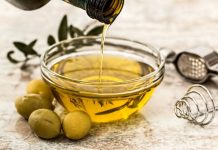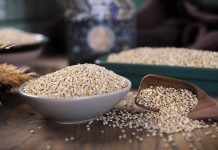Food preparation involves a number of methods and procedures. You can actually eat raw food, such as vegetable salad. You can also binge on your favorite desserts like cakes and ice cream whenever your sweet tooth gets activated. Either way, what we eat always undergoes a certain process – quick or long. Today, we use several food preparation methods such as baking, frying, simmering, grilling, mixing, steaming, and many more.

Now, let’s focus on mixing. Mixing and its equipment advances have largely contributed to the development of food companies. New products are constantly launched every now and then, production costs are lowered, and consistency requirements are all met with its assistance. What is the importance of mixing operation? What are the food mixing technologies utilized by manufacturers today?
The Importance of Mixing
In the aim to produce a completely new product out of the available raw ingredients, proper mixing should take place. Of course, without combining the ingredients, you won’t come up with something new and different. Each cooking method involves a mixing operation – hand mixing or batch mixing through machinery. During the mixing process, the food qualities get defined. These include texture, color, volume, form, taste, appearance, etc.
The main goal of food manufacturers is to maintain the consistency of the food they supply or serve. Without consistency, consumers and clients won’t be loyal to the company for purchase. So, a standard procedure must be regularly done during production to achieve the same kind of product attributes that the customers have loved from the beginning. Excellent mixing operation is responsible for that.
The Different Mixing Applications
Food manufacturers use a wide variety of mixing techniques appropriate for the distinct products and ingredients that need to undergo the process. Normally, the type or style of mixing is determined by the phases of elements – liquid or solid. Physical characteristics of the finished product are also considered – density, viscosity, etc. Sometimes, there are cases that require overlapping of two or a couple of mixing processes.
The right selection of mixers is also vital in order to maximize the utility all throughout the process. Ginhong offers powerful industrial mixers that are effective for your mixing applications. You can browse its gallery of machines and read the product description to find what matches your production process.
Meanwhile, here are several mixing applications that are commonly used in the food industry:
1. Dry Blending
Dry applications use dry blending. This is mostly used in baking ingredients and products such as flour, cake mixes, muffins, snack bars, bread improvers, cereals, and even herbs and spices. For beverage blends, powdered juices, whey protein shakes, energy, and chocolate drinks are included.
The ribbon blender works best in dry blending. A small number of liquids can be added to the mixture so that additive solutions may be absorbed by the processed product. It can also be employed in a food extrusion process that manufactures pasta, cereals, etc.
2. High Shear Mixing and Emulsification
High shear mixing and emulsification are mostly used in producing syrup solutions, pastes, and beverage emulsions. High shear mixers are the pieces of equipment that give the desired qualities of the end-product. These two processes rigorously crush and refine thickening agents that are almost impossible to disperse in a liquid. Rotors (or blades) within a stationary stator act as the grinder of particles that makes the emulsification feasible.
3. Ultra-High Shear Mixing
Ultra-high shear mixing is a continuous and more intense procedure of high hear mixing. If the previous application is not able to carry out the ideal particle size for the product, a stronger force and pressure will be needed. Hence, the ultra-high shear mixing. Reduction to submicron particle and even distribution of the elements throughout the liquid phase can be made possible with this process and an ultra-high shear mixer.
Applications would usually include the production of sauces, flavor emulsions, condiments, dressings, juice concentrations, and the like.
4. High Viscosity Batch Mixing
Medium to high viscosity applications need high viscosity batch mixing. Typically, these products are beverages, sauces, candy syrups, pastes, and spreads like peanut butter. The right machines for this process are dual-shaft and triple-shaft mixers. Two or more agitators work together in producing necessary flow patterns for batch mixes. Candy products utilize this mixing application.
5. Double Planetary Mixing
Planetary mixers are recommended when agitators cannot perform the production of adequate flows anymore due to the accumulation of product viscosity. During double planetary mixing, the highly viscous materials are strictly transferred from the machine’s vessel wall to the interior of the batch mix. Too heavy, viscous, and sticky products like dough are processed efficiently with the practical use of double planetary mixers. It contains rectangular, finger, or high viscosity blades that perform the massive mixing.
6. High-Speed Planetary Mixing
Starchy food, gum solutions, and sausage casing gels are only some of the products that are taken care of by the high-speed planetary mixing process. For items like these, a hybrid planetary mixer is more practical to use. The power of a high-speed disperser is affixed to the conventional careful mixing of a standard planetary mixing.
Conclusion
There is no other way the mixing technology would take to but the path toward advancement and innovation. This gives endless opportunities to the manufacturing companies and factories that involve mixing process in producing their merchandise. As long as you, producers, pick the right equipment for a certain application, you can never go wrong in this industry. Cheers!









































